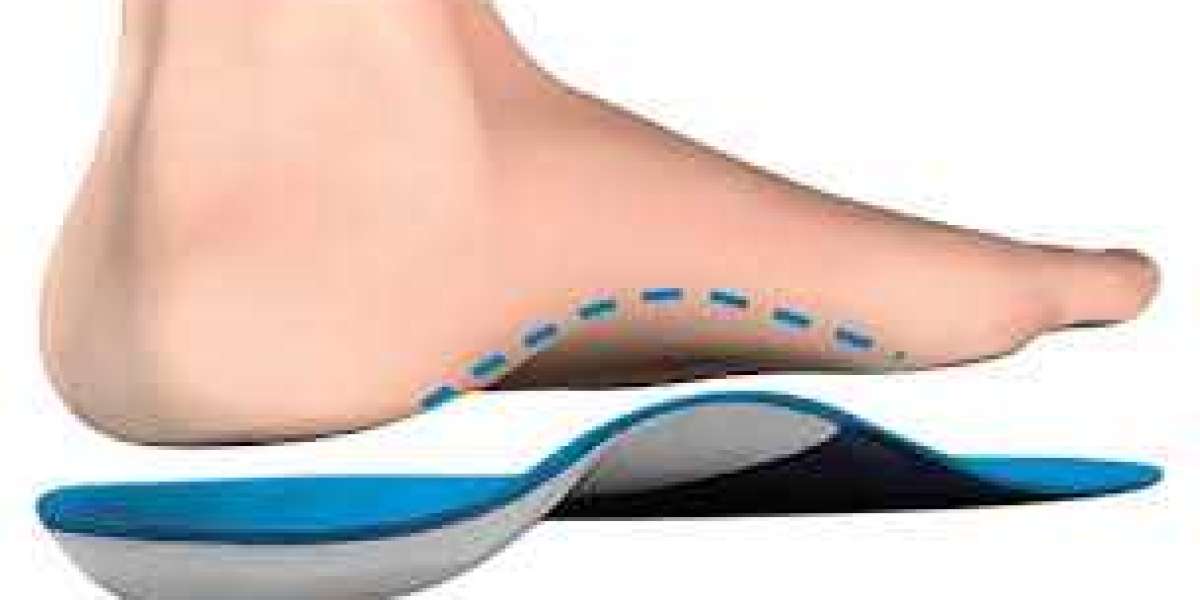Introduction to Orthotics
Orthotics are specially designed devices worn inside shoes to support, align, or improve the function of the foot. They play a crucial role in correcting biomechanical foot issues, alleviating pain, and improving overall posture. Whether used for medical conditions, sports performance, or everyday comfort, orthotics are a practical solution for people of all ages.
These devices can be custom-made to match an individual’s foot shape and specific needs, or they can be purchased as over-the-counter insoles. By redistributing weight and reducing stress on particular foot areas, orthotics help prevent injuries and improve mobility.
Types of Orthotics
Orthotics come in different types depending on the condition being treated and the level of support required.
Rigid Orthotics – Made from firm materials like carbon fiber or hard plastic, these are designed to control foot motion and improve alignment. They are often used to relieve pain in the legs, thighs, and lower back.
Soft Orthotics – Constructed from cushioned materials, these are excellent for shock absorption and providing relief from conditions like diabetic foot ulcers or arthritis.
Semi-Rigid Orthotics – Combining features of both rigid and soft orthotics, they are commonly used by athletes to enhance performance while still offering comfort.
Benefits of Orthotics
The benefits of orthotics go beyond just comfort. Some key advantages include:
Pain Relief – They help reduce discomfort caused by plantar fasciitis, flat feet, bunions, and heel spurs.
Posture Improvement – By aligning the feet properly, orthotics contribute to better posture and spinal health.
Injury Prevention – Athletes use orthotics to prevent overuse injuries by improving foot mechanics.
Enhanced Mobility – For people with joint issues, orthotics improve movement efficiency and reduce fatigue.
Common Conditions Treated with Orthotics
Orthotics are recommended by podiatrists, physiotherapists, and orthopedic specialists for various conditions:
Plantar Fasciitis – Heel pain caused by inflammation of the tissue connecting the heel to the toes.
Flat Feet – Lack of natural arch support can lead to discomfort and improper gait.
High Arches – Can cause excessive pressure on the heel and ball of the foot.
Bunions – Orthotics help redistribute pressure to reduce pain.
Diabetic Foot Complications – Reduce the risk of ulcers by relieving pressure points.
Custom vs. Over-the-Counter Orthotics
When choosing orthotics, one of the main considerations is whether to go for custom-made or store-bought versions.
Custom Orthotics – Designed specifically for your feet after a detailed assessment, these offer the highest level of comfort, correction, and durability. They are ideal for chronic foot problems or sports-related issues.
Over-the-Counter Orthotics – More affordable and readily available, these can provide general support but may not address complex foot issues as effectively.
How Orthotics Are Made
The process of creating custom orthotics typically involves:
Foot Examination – A healthcare professional evaluates your foot structure, gait, and medical history.
Impression or Scan – A mold, 3D scan, or foam box impression of your foot is taken.
Design and Fabrication – The orthotic is crafted using specialized materials to match your needs.
Fitting and Adjustments – The device is tested and fine-tuned to ensure comfort and effectiveness.
Caring for Your Orthotics
Proper care ensures your orthotics last longer and remain effective.
Clean Regularly – Wipe them with a damp cloth; avoid soaking.
Check for Wear – Replace worn-out orthotics to maintain support.
Rotate Shoes – Use them in multiple pairs of shoes to reduce strain on one device.
Avoid Extreme Temperatures – Heat or freezing conditions can warp materials.
Orthotics for Athletes
Athletes often rely on orthotics to improve performance, prevent injuries, and manage pain. For runners, orthotics can help with overpronation or supination, while for basketball or soccer players, they can reduce strain on knees and ankles. Sports orthotics are designed to absorb high-impact forces, enhance stability, and ensure optimal energy transfer during movement.
The Future of Orthotics
With advances in technology, orthotics are becoming more personalized and effective. 3D printing allows for precise customization, while smart orthotics with built-in sensors can track foot pressure and gait patterns in real time. These innovations promise better comfort, injury prevention, and even integration with fitness tracking apps.
Conclusion
Orthotics are more than just shoe inserts—they are essential tools for improving comfort, mobility, and overall health. Whether you’re an athlete aiming to boost performance, someone managing chronic pain, or simply looking for better foot support, orthotics can be a life-changing solution. By consulting a healthcare professional and choosing the right type, you can enjoy better posture, reduced pain, and improved quality of life.



